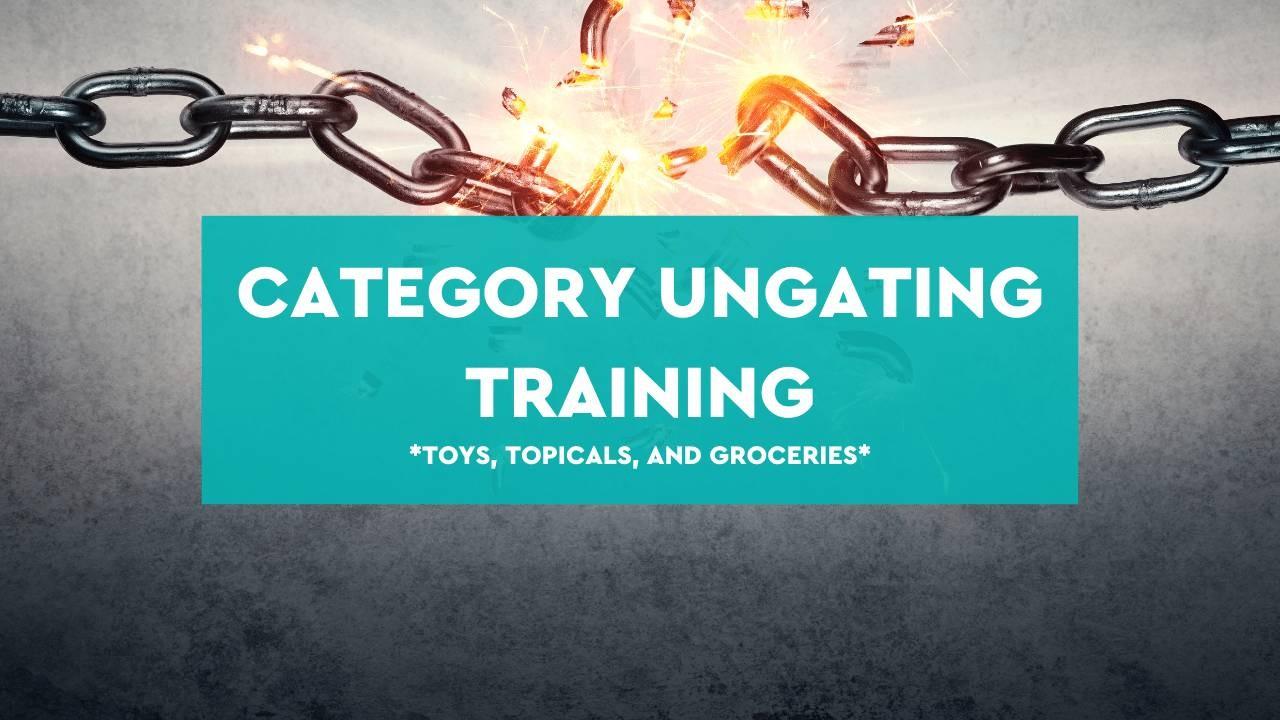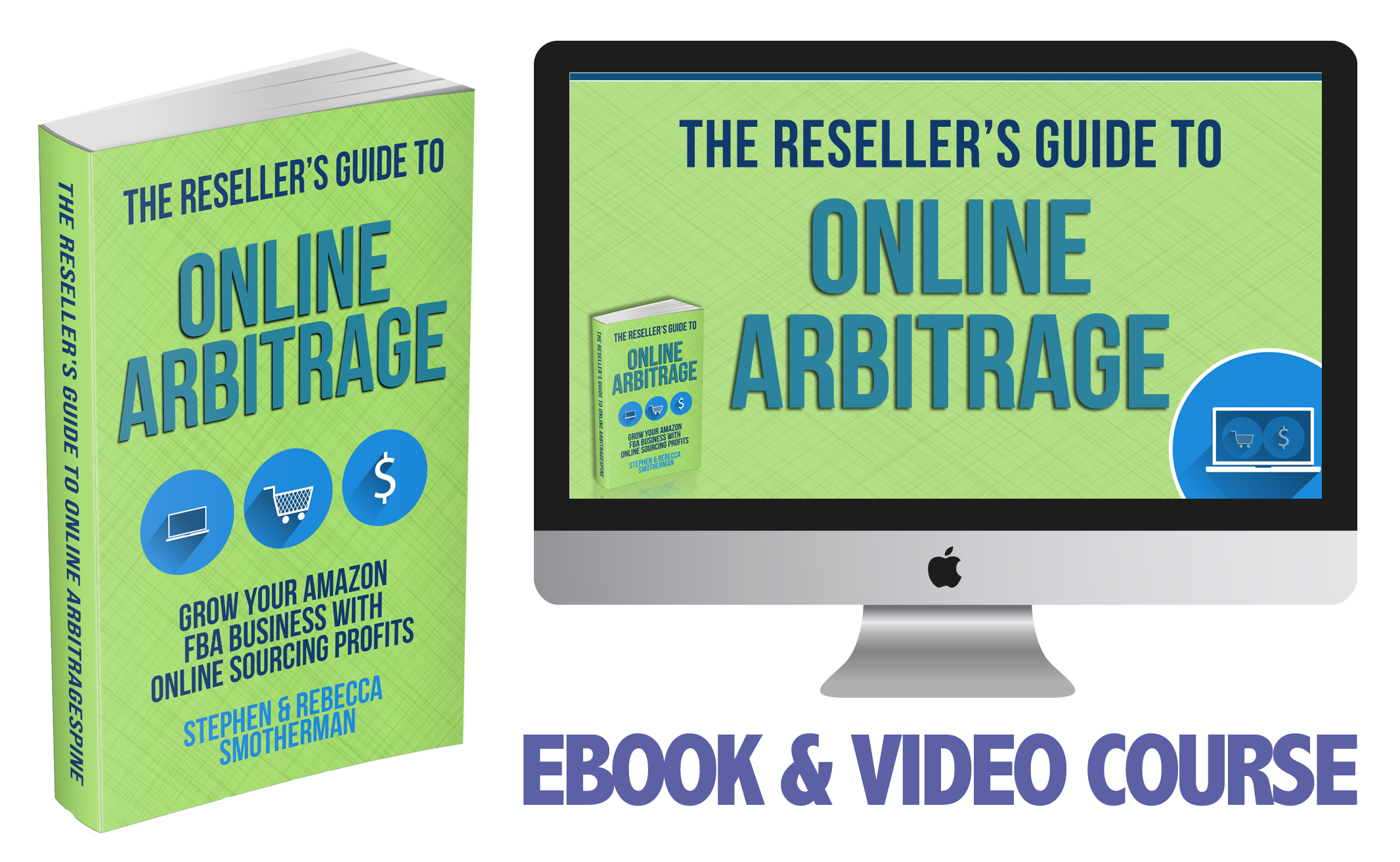Welcome to the third installment of our 2021 October Fears Series! In today’s episode, we’ll be discussing a common theme in the world of FBA: the fear of branching out into new categories in the Amazon catalog. Many people, when they first start selling on Amazon, start by selling in only one or two different categories in the Amazon catalog. This could be for a multitude of reasons, but truth be told, branching out is a common fear, and we’re here to encourage you to overcome that fear and get out of your comfort zone!
In our conversation today, we break down the various fears that people may have around experimenting with new categories and provide valuable insight into how to overcome the relevant obstacles. It remains our goal to help you turn part-time hours into a full-time income, selling almost anything on Amazon. So tune in today to learn more about how to overcome your fear of branching out into new categories.
Listen on the podcast player below.
Like what you hear? Tell a friend… and be sure to leave us a rating and a review. Here’s how.
Key points from Episode 106:
 The vast number of categories and opportunities for sellers to expand their business.
The vast number of categories and opportunities for sellers to expand their business.- Why Amazon sellers should consider branching out into new categories.
- Reasons sellers might be hesitant to branch out into new categories.
- How sellers can confront their fears about branching out.
- The benefits of note-taking with a personal success story from the host.
- Specific examples of fears sellers may have branching out into specific new categories.
- Insight into how Amazon handles expiration dates.
- How InventoryLab assists sellers in keeping track of expiration dates.
- How to overcome restrictions and apply for approval to sell certain brands or subcategories.
- Examples of courses on becoming ungated in specific categories.
- Concerns people may have about selling products with parent-child variation relationships.
- The barrier to entry and how commitment to overcoming obstacles results in success.
- And more!
Links and resources mentioned in this episode:
 Amazon Expiration Dates
Amazon Expiration Dates- Amazon – What Can I Sell?
- The Selling Family – Category Ungating Approval (Use code FT20 to take 20% off)
- The Selling Family – Premium Brand Ungating Training
- InventoryLab
Right-click here and save as to download this episode to your computer.
 More Episodes from the Full-Time FBA Show podcast:
More Episodes from the Full-Time FBA Show podcast:
Don’t miss an upcoming episode! Subscribe, download episodes, and review the Full-Time FBA Show:
-
-
- Subscribe on iTunes
- Follow on Spotify
- Follow on Amazon Music (or just ask Alexa to “play The Full-Time FBA Show podcast”)
- Follow on iHeartRadio
- Subscribe on Podbean
- Subscribe on Podbay
- Subscribe on Podchaser
-
![]()
The Reseller’s Guide to Online Arbitrage
If you want to add or improve your existing online arbitrage (OA) sourcing skills, then check out our course: The Reseller’s Guide to Online Arbitrage: Grow Your Amazon FBA Business With Online Sourcing Profits.
The course is a combination video course (5+ hours of OA training) and a 100+ page ebook. The videos and book both share the exact same content (so you can pick the format you most like to learn from). The course also comes with six time-saving and money-making bonuses all at no additional charge!
![]()
Back to the main page for The Full-Time FBA Show
![]()
Episode 106 Transcript:
 [INTRODUCTION]
[INTRODUCTION]
[0:00:00.4] STEPHEN: With it being October, we are in the middle of our October Fears series, about how to overcome fears in your Amazon FBA business. Of course, we have some different theme music, so let’s just get that going and get right into the show’s intro.
[0:00:12.5] ANNOUNCER: Welcome to The Full-Time FBA Show. In each episode, it’s our goal to help you turn part-time hours into a full-time income, selling almost anything on Amazon. Now, your hosts of the show, Stephen and Rebecca Smotherman.
[0:00:30.8] REBECCA: Hello and welcome to this episode of The Full-Time FBA Show. We are so glad you are joining us. Today, we are going to be talking about overcoming your fears of branching out into new categories. It is October, it is our Fear Series for the month of October and we’re talking about different fears you might have when you’re running your Amazon FBA business.
This week, we’re going to be talking about being afraid of trying a new category on the Amazon catalog and here with me today as always, to discuss our topic is my co-host, Stephen Smotherman.
[0:01:03.6] STEPHEN: Yeah, there’s like 30 main Amazon categories and then a gazillion subcategories. I have counted them all.
[0:01:09.2] REBECCA: That’s an official number.
[0:01:10.9] STEPHEN: Yes, I counted them myself. There’s a lot of new areas that people can sell in that they’ve never sold before and so we’re going to help people get over that fear of getting out of your comfort zone and branching out into new categories.
[CONVERSATION]
[0:01:27.5] REBECCA: Let’s get into our topic for today. A lot of people, when they first get started selling on Amazon, are going to have started selling in only one or two different categories in the Amazon catalog. That might be different categories for different people, a lot of people are going to start out, either in books or toys, those are probably the two most common but even if they don’t start in one of those categories, chances are, are going to start out in one or two particular categories because they want to stay focused and learn that category and it’s just kind of what they know.
It could be that if you are new or if you’ve been doing Amazon for a while and haven’t branched out at all, that you might be experiencing a little bit of intimidation at the thought of trying a new category for whatever reason and we’ll get into some of those reasons why you might be afraid to branch out into new categories. It is a common fear, it’s one that we ourselves have dealt with in the past. I know I personally have dealt with, “I see this item, it could or could not be good to resell, I don’t sell on that category and I’m a little bit nervous about even trying it.”
This is something that people deal with all the time as Amazon sellers, and we want to talk about it today and see why it is that you should just not be afraid to try a new category. On that note, Stephen, talk to us as we get started about why sellers should consider branching out into new categories on the Amazon catalog?
[0:02:51.5] STEPHEN: Well, like you said, since most Amazon sellers, when they first get started, mostly focused on one or two categories. I mean, the bottom line is you’re limiting yourself with just one or two categories. The more categories you can sell in, the more categories you get comfortable with, gives you more opportunities for sales, more opportunities to find inventory.
With limited number of categories, there’s limited growth. Just being able to find more inventory to sell as you get to know these different categories, because each category honestly has its own personality: what sales rank is good for a particular category, what items sell really well in each different category — they all have their own personalities and so the more categories you can sell in, the more profits you’re going to have, the more sales you’re going to have.
Each of the categories, like I said before, have subcategories and so sometimes, the riches are in the niches. When you really niche down into a subcategory, you might be able to find like a gold mine of something that’s really good and profitable for you in the long run, because you branched out to a new category.
Bottom-line, well-rounded inventory, you have your eggs in different baskets, different categories, you have your inventory spread out and it gives you a lot more of a well-rounded inventory to have a successful Amazon business.
[0:03:58.1] REBECCA: Then, why are some sellers hesitant to branch out to new categories. I totally agree, see those reasons and think those are all excellent reasons for branching out, but what is it that holds us back, why is it that some of us are hesitant to try a new category.
[0:04:12.4] STEPHEN: There’s a couple of different reasons. I mean, first off, if you are finding success in one or two categories, the times you might think, “Why should I even bother? I’m finding success with books and toys” or whatever. Learning a new category gets you outside of your comfort zone. Even though there’s all these pros behind branching out to a new category, one of the cons is that it can be uncomfortable, you’ve got to learn something new.
You also sometimes can wonder, “Am I even going to find profitable inventories, is it going to be worth my time learning a new category? I mean, learning a new category, I’m going to make some mistakes, I’m going to buy some stuff that’s not profitable I missed on accident. Is it worth my time to invest in learning this new category?” Then the question is like, “You know, I understand how restrictions work in the toy category” or things like that. “What’s the restrictions that are involved in this other category that I want to add? What if I’m gated and restricted, spend a lot of time sourcing for inventory just to find out that I can’t sell it because I’m not approved?”
A lot of different reasons why sellers can be hesitant to branching out to new categories, but they’re definitely all able to be overcome and that’s what we’re going to help you out with today.
[0:05:11.8] REBECCA: Something that I’m sure we’ve all heard before is that one of the best ways to conquer your fear is to just confront it. Face your fears. How can a reseller confront their fear of branching out into these unknown categories, if this is something that’s holding them back, what do they need to do, what’s the step that they need to take in order to face that fear?
[0:05:28.8] STEPHEN: Well, even though Amazon has over 20 to 30 main categories and then of course, gazillions, like I said before, of subcategories, one thing that they can do is to just pick one new main category to try. Read up on the guidelines about that category, what are the best practices, maybe search that category name in Facebook groups to see what kind of conversations are going online about that category.
Maybe there’s a course that you can take to help you learn more about that particular category and then start to experiment, you know? Set aside a little bit of money to try buying inventory in that particular category and then see how things go. Note your successes, note your failures, obviously repeat the things that you found success and then see what lessons you can learn from your failures. Trial and error are some of the best teachers, so just go out there, experiment and try.
[0:06:13.6] REBECCA: Yeah, I would add to that, if you are doing any type of experiment like this, you said, note your successes and your failures. Just in general, take lots of notes.
[0:06:21.5] STEPHEN: Yes.
[0:06:22.3] REBECCA: Keep everything noted, whether you do it in a document on your computer or in an actual notebook. Jot down your thoughts and the process that you go through, what is working, what is not, things that you’re learning and look back over that after several weeks or a couple of months to see, “What have I learned here and what would I try again?” and what would I say, “Okay, we’re not going to do that again?”
[0:06:44.9] STEPHEN: Yeah, I remember — just kind of going off script of what we’ve prepared for here — Just remember your shoe experiment when we started learning how to buy and sell shoes on Amazon. You had some really good notes and helped us overcome a lot of those fears and help us find success with selling in the shoe category.
[0:06:59.5] REBECCA: Yeah, that was something that really stuck with me, that was a big experiment, it was probably the biggest experiment I’ve undertaken in our FBA business, and it really led to some great places for our business and I’m very thankful for that, that I thought to do that at the beginning of it, for whatever reason.
I was like, “I’m going to take really good notes” and after I did that, I recommend that for anybody. Just write everything down. Even if you don’t think that it is important information, you don’t know that, and it could end up — some little note that you make about a source or something to do with that category could end up being the key for you to opening up lots of profits in that category down the road.
[0:07:35.4] STEPHEN: Yep, absolutely.
[0:07:36.5] REBECCA: Okay, so give us some more specific examples of fears that some sellers have about branching out into some particular new categories.
[0:07:43.8] STEPHEN: Yeah, there are some categories that have maybe a new aspect that you’ve never had to learn before, like the grocery category or the health and beauty category. Those have expiration dates and so that leaves you with another layer of something to learn, you know, “How does Amazon handle expiration dates? What can I do with expiration dates? I don’t want to sell something that gets expired and so how can I even keep track of expiration dates?”
The cool thing is that Amazon pretty much lays everything out for you on understanding dealing with expiration dates when it comes to grocery and health and beauty type of items. You can go to fulltimefba.com/expirationdates and it will forward you to the page of Amazon telling you everything that you need to know, or when it comes to that, and so that you know that Amazon will — when it gets your inventory, they’ll take note of what the expiration date is. They will remove your inventory when it gets to a certain point well before the expiration date arrives. The thing that you actually should remember though is that you want to try to sell your inventory before it gets to the date where Amazon removes it, and so that’s one of the reasons we use Inventory Lab.
With Inventory Lab, we can set up reminders right there within Inventory Lab when we’re listing our inventory about what the expiration date is and how soon you want to be reminded that the expiration date is coming, so that we can maybe try to price it to sell if the expiration date is looming closely because we want to sell it before we get to the place where Amazon removes it even before the expiration date even comes.
There’s that, but any type of aspect of learning a new category, others have found success by learning how to do it and doing it well and you can too. Another question some Amazon sellers might have is like, “Okay, well how do restrictions work in this category? Is the whole category restricted? Are there certain subcategories or maybe is it just brands that are restricted and I’m not allowed to sell?”
Again, these are things that you can figure out and overcome and learn. You can go to fulltimefba.com/whatcanisell and that will tell you which areas of Amazon you’re approved to sell, which ones you are restricted. If you come across a particular item that is profitable and maybe you’re sourcing app or maybe Amazon is telling you, you are currently restricted for that particular item, then just seek approval right there.
Apply to be approved to sell that particular brand or subcategory. You might, just because of your current seller metrics, get automatically approved and that’s awesome. Just by applying right then and there. But, if you are denied being able to be approved for a particular brand or whatever, then you can try different types of courses that can show you either what to buy to get approved or which brands are even out there that can be auto-approved just by clicking on applying for a particular ASIN.
Some links that can help you out: fulltimefba.com/categoryapproval is a mini-course that will help walk you through exactly what you need to do to be ungated in some of the toy subcategories, the grocery category, a lot of different health and beauty topical subcategories, and it can help you open that up. Then there’s a new course that’s walking you through how to get approved for premium sport brands.
You can go to fulltimefba.com/premiumbrands, it’s a course put together by my friend, Jessica Larrew on getting approved for Nike, Under Armour, Jordan, Adidas and over 70 brands that are able to be opened up for you. Again, if you don’t get auto approved yourself, you might be able to hire or learn by yourself with a course exactly what are the steps to get approved. There are solutions for every problem that you can have. Someone else has probably found the solutions, you can just research and find out the solutions for yourself.
[0:10:59.6] REBECCA: Yeah, I would add another category that has some pretty specific concerns for a lot of people is the clothing and shoes. Those type of apparel categories where you have parent-child variation relationships. That is something else that people often are concerned about if they have not sold in a category that has the parent-child relationship and how does that affect the sales rank, how does that affect the reviews.
Those types of things come into play in categories like the shoes and clothing category, where you’ve got those variations, where you’ve got one parent listing and then a bunch of different colors or sizes and styles all within one product page — how does that work? People can also have some issues trying out that category. They might think, “No, that’s too much. I don’t want to try that. I don’t understand it” but that can be overcome as well.
There are ways to learn and get a lot of experience to where you will, at one point, look back and think, “Why was I ever worried about that?”
[0:11:55.2] STEPHEN: Right and as you’re listening to this, you might be thinking, “I don’t want to learn all that. I don’t want to overcome that”. Let me tell you, there’s everyone else listening to this as well, thinking they don’t want to overcome that, and they don’t want to learn how to figure that out.
This is called a barrier to entry and so those who actually commit to learning how to overcome these little speed bumps are going to be able to find more success and sell more items because they’ve done the hard work and put in the hours and learned how to overcome these different types of speed bumps while everyone else just thinks, “Oh that’s too hard. I’m going to go back to the easy.” Easy can only get you so far.
It’s those who commit to doing the hard work and overcoming these speed bumps like I said before, who are going to find long term success. Dealing with expiration dates, dealing with parent-child ASINs, dealing with brand restriction, subcategory restrictions all these can be overcome and there’s a way to do that if you stick with it.
Hopefully this episode has helped you learn how you can start branching out into new categories to find more inventory to sell and make more money selling on Amazon.
[CLOSING CONVERSATION]
[0:12:56.5] REBECCA: Thank you again for joining us for this episode of The Full-Time FBA Show. I know we had a lot of links that we threw out at you during this episode, and we will include all of these links in the show notes, as well as the transcript if you want to look back over the written version of the show. You can find that at fulltimefba.com/106 because this is episode 106.
[0:13:16.9] STEPHEN: Next week on The Full-Time FBA Show, we are going to continue our Fear Series to help you overcome buying items with a high sales rank. You can actually find really good items to sell on Amazon with a high sales rank. They’re going to sell pretty quickly and I will show you exactly how you can do that. You don’t have to avoid all the high sales rank items, you can actually make some good money with those and I’ll tell you which ones to look for next week on The Full-Time FBA Show.
[OUTRO]
[0:13:42.6] ANNOUNCER: That’s all for this episode of The Full-Time FBA Show. So, head over to fulltimefba.com/podcast, where you will find the show notes and links from this episode. While you’re there, subscribe to our newsletter where you’ll get several free downloads of our popular and helpful Amazon FBA resources, including a free E-book. Now, take action on what you have learned today so you can find success at turning part-time hours into a full-time income with Amazon FBA.
[END]


Leave a Reply